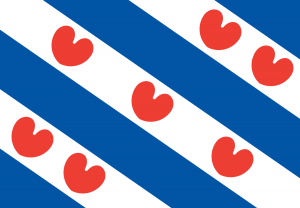Language/Western-frisian/Grammar/Plurals
Hi Western Frisian learners! 😊
In this lesson, we will continue our study of Western Frisian grammar by exploring plurals. Plurals are an essential part of any language, and Western Frisian is no exception.
Take a moment to explore these relevant pages as you conclude this lesson: Gender, Adjectives, Irregular Verbs & Basic Sentence Structure.
Plurals in Western Frisian[edit | edit source]
In Western Frisian, plurals are formed in several different ways. The most common way is to add "-en" at the end of the singular form of the noun. For example, "hûs" (house) becomes "huzen" (houses), "beam" (tree) becomes "beammen" (trees).
Another way to form plurals is by changing the vowel or vowels in the singular form of the noun. For example, "frou" (woman) becomes "froulju" (women), "bern" (child) becomes "bern" (children).
There are also some irregular plurals in Western Frisian. For example, "man" (man) becomes "minsken" (people), "earm" (arm) becomes "earmen" (arms).
Exceptions to the rule[edit | edit source]
As with any language, there are some exceptions to these plural forms in Western Frisian. Here are a few to keep in mind:
- Words ending with a consonant other than "n" or "t" simply add "-s" to form the plural. For example, "boek" (book) becomes "boeken" (books), "lamp" (lamp) becomes "lamper" (lamps).
- Compound words have different plural forms depending on their structure. For example, "autoûngelok" (car accident) becomes "auto-ûngelokken" (car accidents), but "boekekaft" (book cover) becomes "boekekaften" (book covers).
- Some words have the same plural form as their singular form. For example, "pake" (grandfather) becomes "pake" (grandfathers), "sok" (type of sock) becomes "sok" (types of socks).
To further understand plurals in Western Frisian, let's take a look at some examples in the table below:
| Western Frisian | Pronunciation | English |
|---|---|---|
| hûs | "hoos" | house |
| huzen | "hoo-zen" | houses |
| beam | "bay-am" | tree |
| beammen | "bay-am-mun" | trees |
| frou | "froo" | woman |
| froulju | "froo-lu" | women |
| bern | "bern" | child |
| bern | "bern" | children |
Using Plurals in Context[edit | edit source]
To help you better understand how to use Western Frisian plurals in context, let's look at a simple conversation:
- Person 1: "Ik ha twa auto's." ("I have two cars.")
- Person 2: "Dat is in soad!" ("That is a lot!")
In this example, Person 1 uses the plural form "auto's" to indicate that they have more than one car. Person 2 responds by using the singular form "dat" (that) to indicate that they are referring to the quantity of cars, not the cars themselves.
Practice Makes Perfect[edit | edit source]
To fully grasp the concept of plurals in Western Frisian, it's important to practice using them in conversation. Find native speakers and ask them any questions you may have. You can also find many resources on Polyglot Club to help you improve your Western Frisian grammar skills.

